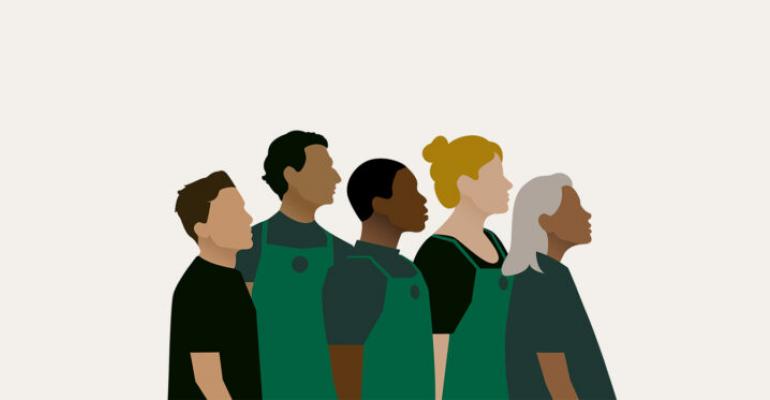In a letter to employees published on Wednesday, Starbucks CEO Kevin Johnson outlined the company’s latest diversity and racial-equity efforts both at corporate and store levels.
At the corporate level, Starbucks is linking their executive compensation program to the diversity and equity of their teams, and will require all vice president-level employees and above to complete anti-bias training. The company is also establishing an Inclusion and Diversity Executive Council to give voice to and provide internal governance on issues pertaining to people of color within the organization, and committed to achieving 30% BIPOC representation at the corporate level by 2025.
On a store level, Johnson said that they are committing to 40% BIPOC representation by 2025 and will be launching a mentorship program connecting Starbucks employees to leaders within their division to focus on developing and promoting diverse talent within the organization.
Starbucks also will be disclosing up-to-date data on the current diversity of their workforce. Right now, 53% of Starbucks’ total workforce is Caucasian, 8% of their workforce is Black, 5.5% is Asian, and 26.9% is Hispanic/Latinx. On a corporate level, the numbers are even more stark: 65.2% of employees are white, 19.2% are Asian, 7.4% are Hispanic/Latinx and 2.6% are Black.
“We know that a more inclusive environment will create a flywheel that leads to greater diversity, and thereby greater equity and opportunity for all,” Johnson said in his letter to employees. “Greater diversity enables us to better fulfill our mission.”
In addition to committing to stronger diversity and equity initiatives on a company-wide level, Starbucks also announced on Wednesday that the company’s philanthropic arm, the Starbucks Foundation, would be awarding $1.5 million in neighborhood grants to advance racial equality to more than 400 nonprofit organizations across the country. Recipients include Big Brothers Big Sisters organizations, centers for racial justice and education, family centers, and Boys & Girls Clubs of America.
These are not the first efforts Starbucks has made toward advancing racial equity and correcting achievement gaps and racial challenges within their own organization. In June, the company walked back an internal memo that was circulated to employees banning baristas from wearing Black Lives Matter gear. Starbucks later released its own design for a Black Lives Matter shirt that employees can choose to wear during their shifts.
Contact Joanna Fantozzi at [email protected]
Follow her on Twitter: @JoannaFantozzi





